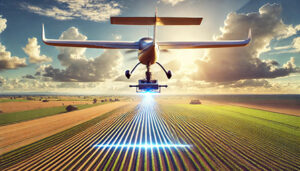Table of Contents
Introduction to Hybrid VTOL UAVs
VTOL UAVs (Vertical Take-off and Landing) are type of drones that can operate in two vertical and horizontal phases. They can can take off in vertical mode, similar to multirotor drones, and then transition into horizontal or fixed wing mode and fly like conventional fixed wing drones. Compared to conventional fixed wing drones, VTOLs do not need a runway for take-off and landing, which allows them to operate in spaces as small as 2 by 2 meters. On the other hand, transitioning into horizontal mode allows them to use the lift force on the wings to fly longer distances compared to multirotor drones. They combine the best features of both types of drones for adaptable missions.
Traditional take-off and landing methods have some disadvantages. During the take-off, the UAV should be launched by hand, using a catapult, or taxiing in a runway. The first method is not always safe and is prone to operator errors, the second one requires extra heavy setup to be carried with the drone everywhere, and the third one requires a flat long surface in order for the drone to reach the desired speed before take-off. During the landing, the lower part or belly of the drone comes into contact with the ground during the landing process. Alternatively, they have to use a landing gear which has its own advantages and disadvantages. This type of landing can damage the body of the drone. Opposed to that, hybrid VTOL UAVs eliminate the need for belly landings. Hybrid VTOL UAVs are designed with vertical takeoff and landing capabilities, which greatly reduces the risk of damage or challenges to the airframe during landing operations.
Meanwhile, VTOLs can be further divided into fully electrical (eVTOL) and Hybrid VTOL UAVs based on the propulsion system that they use. More specifically, hybrid vehicles combine gasoline engines with electric motors for efficiency and emissions reduction in transportation, while fully electric models, as the name suggests, only use electric propulsion system.
In the past few years , VTOL aircraft and hybrid vehicles have made big strides and gained popularity in many industries, and they continue to make progress. Hybrid VTOL UAVs are widely used in various industries because they can handle many different tasks effectively and are versatile solution for different harsh environments. VTOL aircraft and hybrid vehicles are widely used in commercial cargo transport, urban air mobility, humanitarian missions, and most recently in air taxi systems to transport humans in cities. Newest innovations in propulsion systems, power systems, and advanced materials improve their efficiency and sustainability. This new industry is changing the way we travel, as well as the goods delivery and transportation.
In this article, we will talk about the reason that Hybrid VTOL UAVs are set to shape the future of aviation, and why they are transforming industries like logistics, farming, defense, and emergency aid.
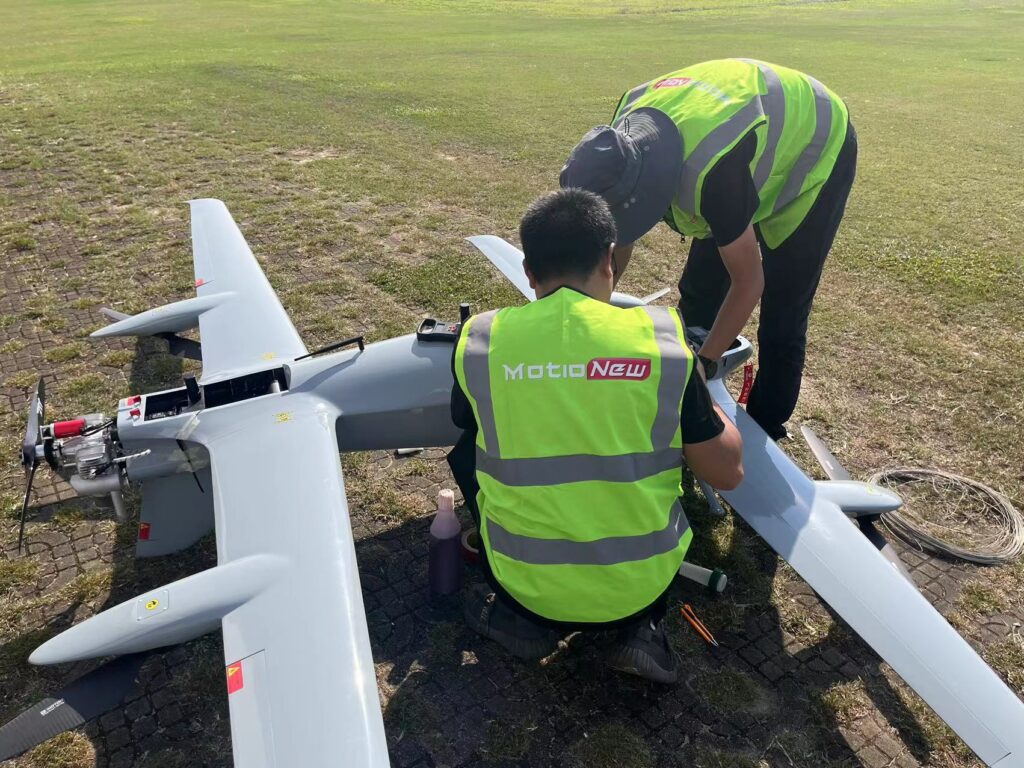
Key Features and Benefits
There is a slight difference between hybrid VTOLs and fully electric VTOLs. Hybrid VTOLs normally combine traditional internal combustion engines (often pistons or turbines) with electric motors or generators. Looking more closely at the VTOL abbreviation, it is the short form of Vertical Take-Off and Landing. The vertical phase uses electric propulsion systems. This is due to the dynamic response of the vehicle in vertical mode which requires actuators with fast response time to control the vehicle in a stable position, which can be achieved using electric propulsion system. However, when the vehicle switches to forward mode, the Hybrid VTOL uses a fuel engine. This usage of fuel engines in horizontal mode can have a lot of benefits.
On the other hand, fully electric VTOLs rely on electric motors both in vertical and horizontal mode. Thus, they gain their power only from batteries. At the present time, the energy density of batteries has its own limits on the range and endurance of fully electric VTOLs compared to their hybrid counterparts. So they can not fly in long distances.
Here, we are going to talk about a few advantages of VTOL fixed-wing hybrid drones that you can apply for security and surveillance operations.
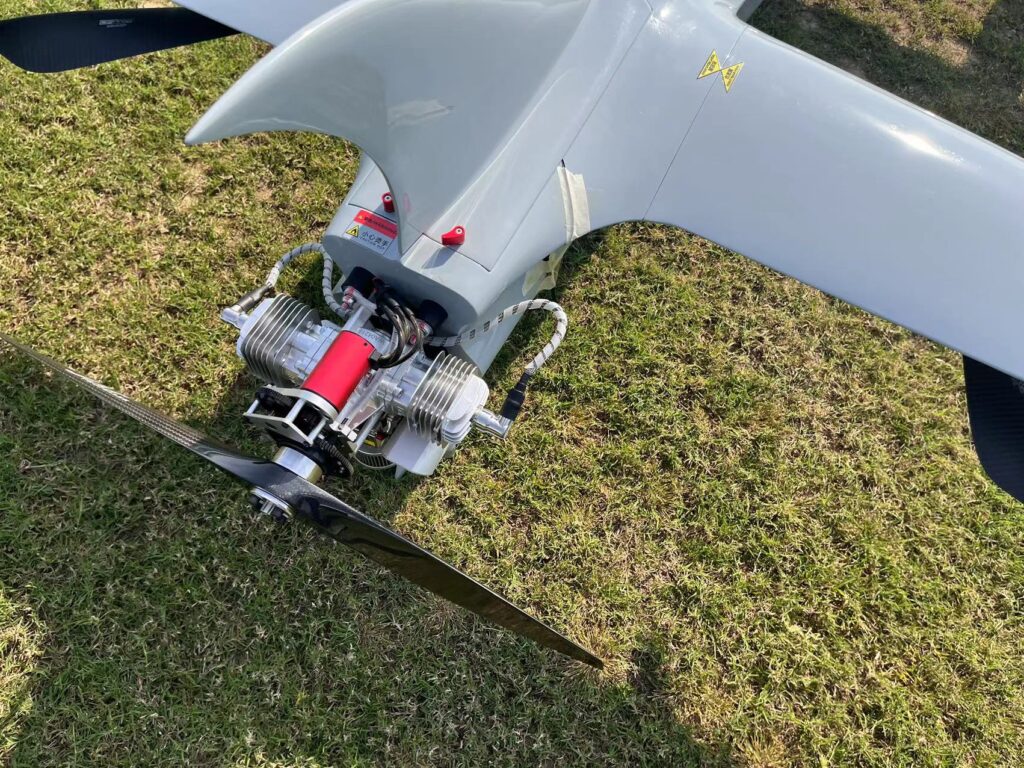
Extended flight time
One of the advantages that can be mentioned about hybrid VTOL UAVs is the extended flight time. Fixed-wing UAVs, which have been using the lifting force that moves with their wings, have reached a significant point where they decrease the energy consumption necessary to maintain a stable flight usign the lift force on the wings. Thus, not only aerodynamic design of VTOLs in horizontal mode allows them to cover more areas in one flight compared to multi-rotor drones or quadcopters, but also the use of fuel engines compared to electrical motors powered with battery extends the flight time even more.
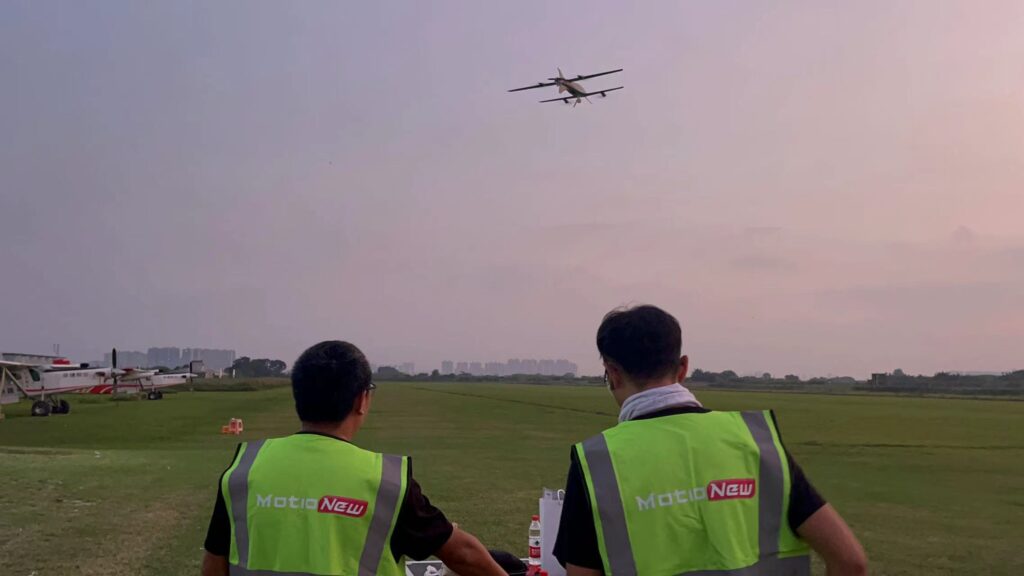
Increasing payload capacity
Payload capacity refers to the maximum weight of additional equipment, sensors, cargo, or the other things that an aircraft can carry, which is an important factor in many applications. For example, being able to to carry a higher payload means you can install a bigger camera with higher resolution for aerial photography, or being able to carry more water or seed for agricultural applications. Hybrid VTOLs have a higher maximum payload capacity compared to fully electrical VTOLs considering the same flight time.
Increasing the efficiency of hybrid VTOL
All the mentioned benefits at the end lead to a higher efficiency of the hybrid VTOLs. In many applications, due to the low flight time of the UAV and the small capacity of payload, you need to land the drone, reload, and then take-off again in order to be able to complete the mission. This not only adds extra operation time, but also adds some risks as the take-off and land phase are the phases that most of the aerial crashes happen. Moreover, considering the fully electric VTOLS that use battery as an example, they need to land after a while to swap the battery or recharge it. So you have to either have multiple backup battery to reduce the time between each flight which is expensive, or recharge the battery which takes some time. All in all, these advancements are not only enhancing operational flexibility , they are also causing innovation in aerial mobility and unmanned aviation applications.
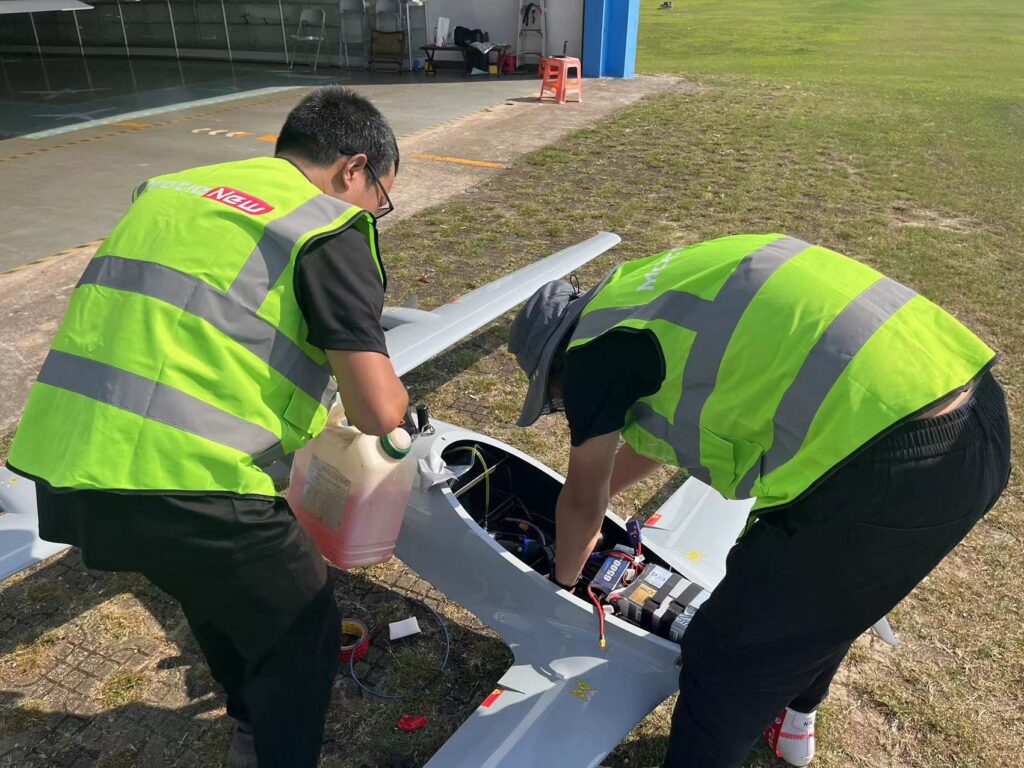
Applications in Various Industries
This compatibility is crucially important for applications such as urban air mobility (UAM) by using small aircrafts to move people and goods around cities, precision agriculture by using technologies like GPS, sensors, and data analysis to improve how crops are grown in the farms, and infrastructure inspection including checking bridges, roads, buildings, and utilities to make sure they are safe, working well, and meet regulations.
Future Trends and Innovations: A new era in aviation technology
The emergence of VTOL unmanned aerial vehicles (UAVs) indeed represents a special advance in aviation technology, which depicts an unprecedented efficiency in air operations. These planes, which are designed to take off and land straight up without the need for an airport, can cause a revolution in various industries. From emergency response and infrastructure inspections to surveillance and logistics, VTOL drones have enormous potential to change the way we approach air missions.
Transformation of industries beyond aviation
Let’s take a look at the changes in aviation at a glance. We can look at unmanned vehicles, which are at the center of attention as a transformative and widely used technology, and what they do from surveillance to reconnaissance to delivery services and even more, and also drones that will shape the future of flight. These advanced technologies help us explore the future of flight in unmanned aerial vehicles.
The ability of these UAVs, specially in urban areas with high density and uneven terrain, without any limitations due to the presence of traditional runway-dependent aircraft, has made them very practical and also beneficial. In addition, their automatic capabilities make them perform missions more accurately and efficiently, and the need for intervention by humans is decreased day by day, with increases overall safety.
In emergencies, VTOL UAVs can rapidly deploy to affected areas and perform aerial reconnaissance for support, search, and rescue, to find life and transport essential equipment. In infrastructure inspections, they are a cost-effective and versatile tool to obtain the position of bridges, pipelines, and power lines, helping to identify potential hazards and maintenance.
In addition, VTOL drones are promising to revolutionize industries such as agriculture, where they can be used for high-precision monitoring, spraying, and crop mapping, which can certainly have a significant impact on the speed and power of users’ work. In the commercial sector, they bring new opportunities and enable faster and more efficient transportation of goods in busy urban environments.
In conclusion, hybrid VTOL UAVs blend the strengths of both multirotor and fixed-wing technologies, revolutionizing unmanned flight. They’re versatile tools for civilian infrastructure, military missions, and scientific exploration, reshaping how we operate in the skies worldwide. As these drones evolve, they promise to improve efficiency, safety, and operational capabilities, opening up new possibilities for aerial applications.

